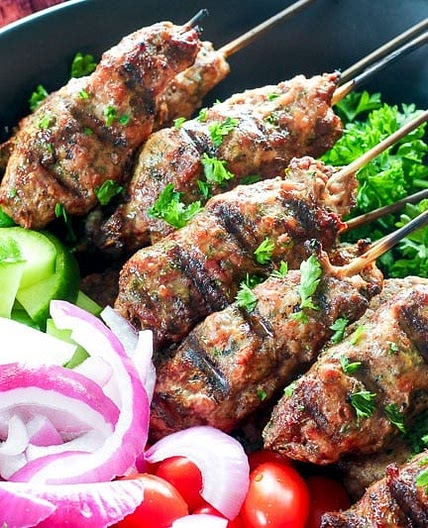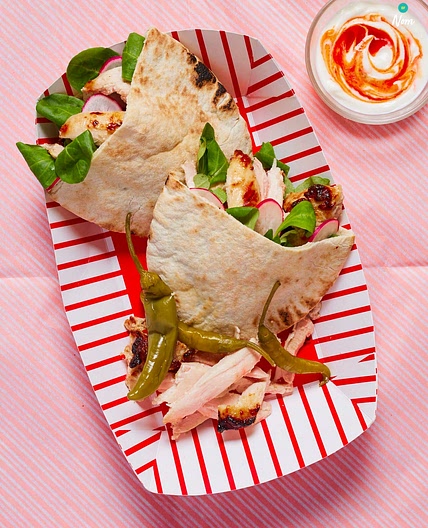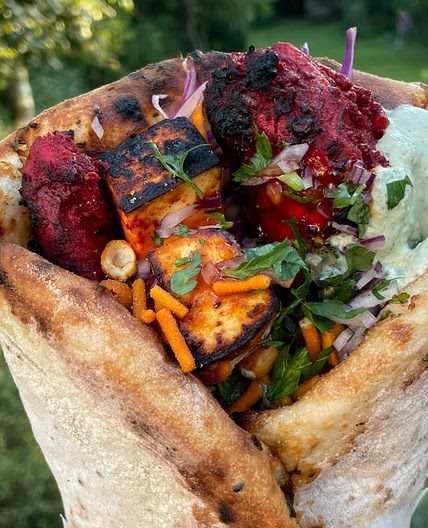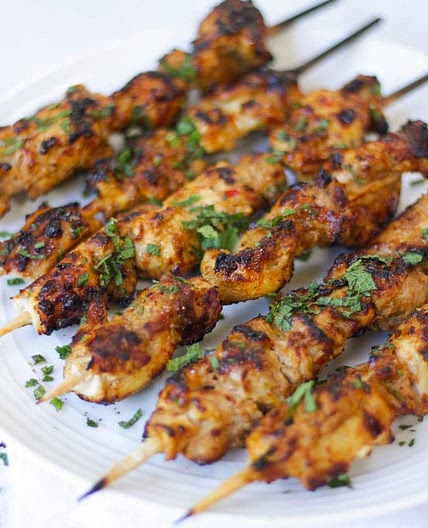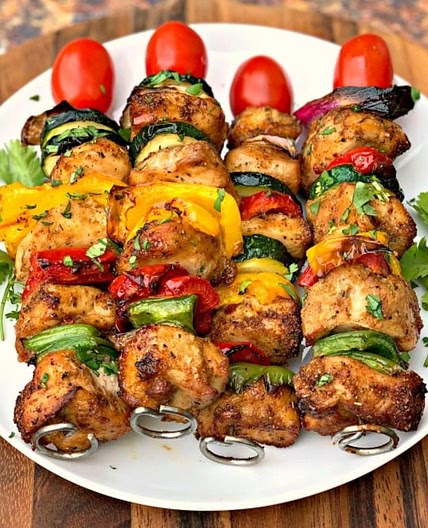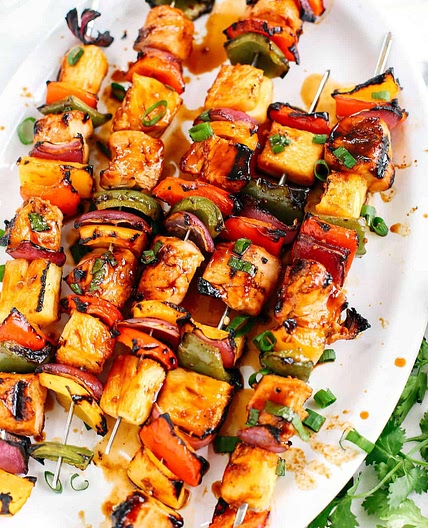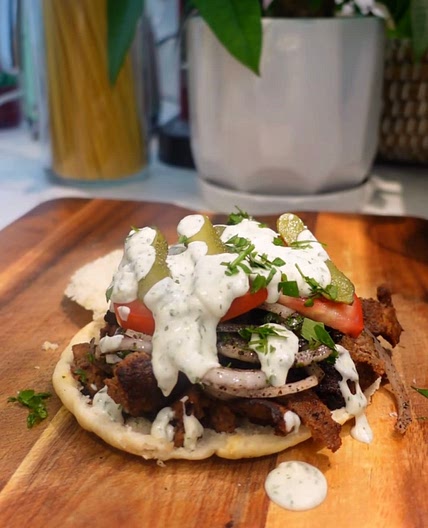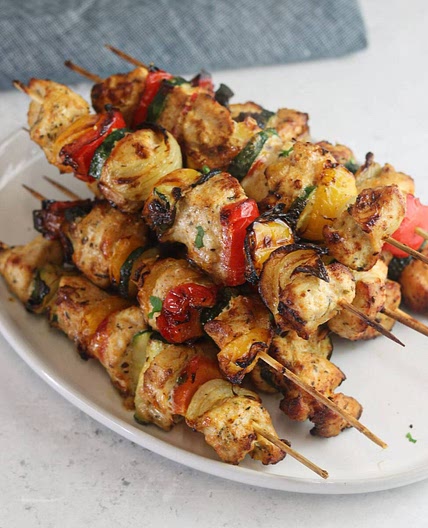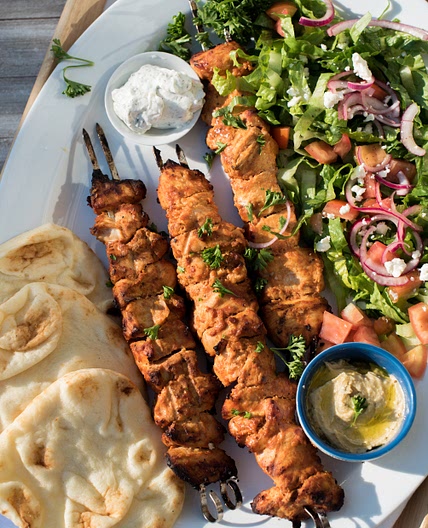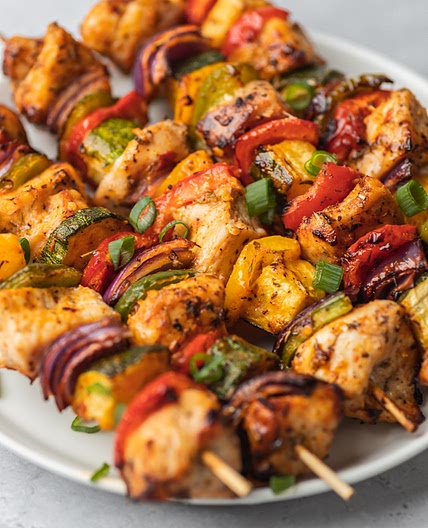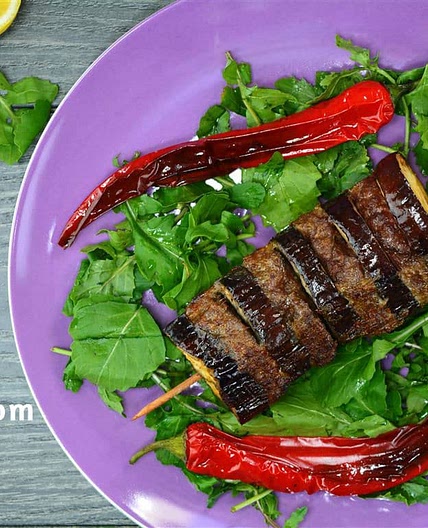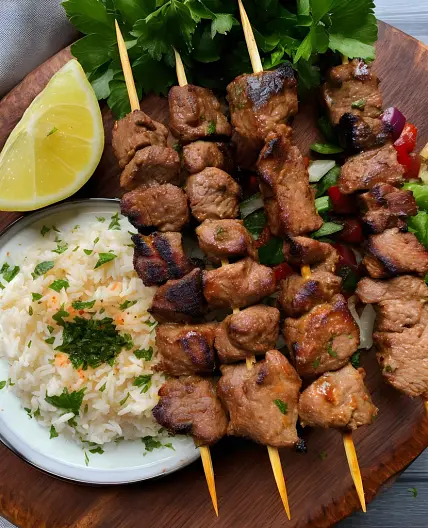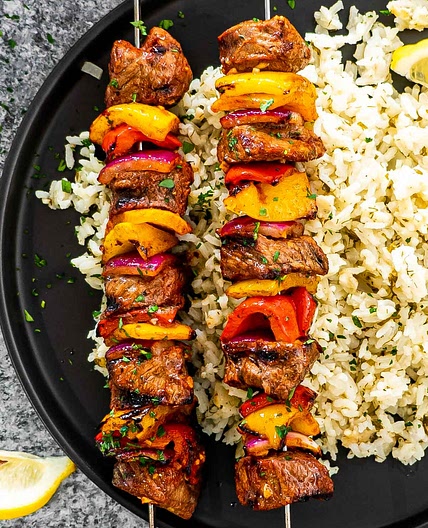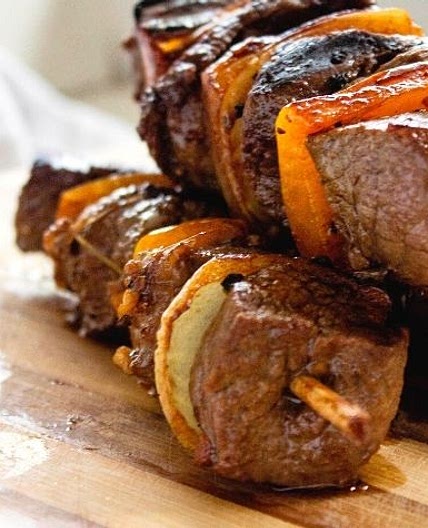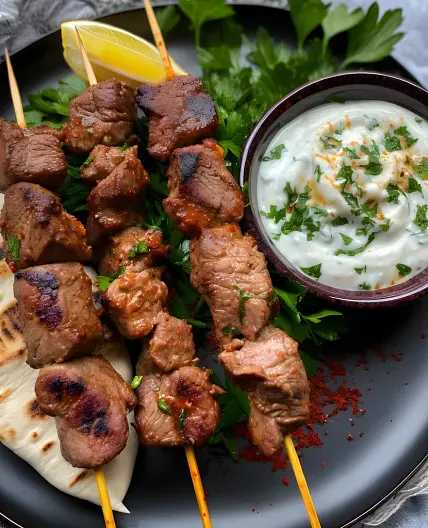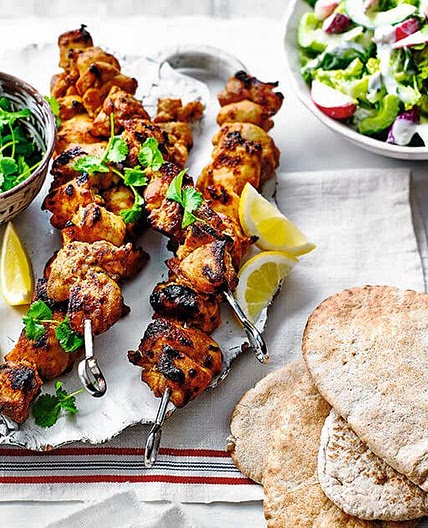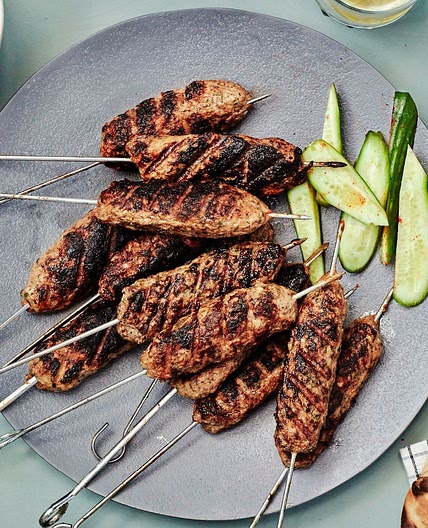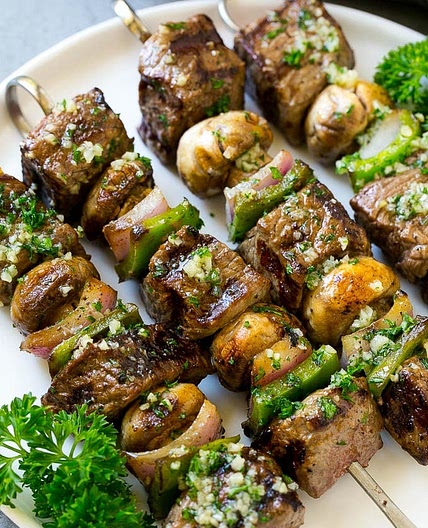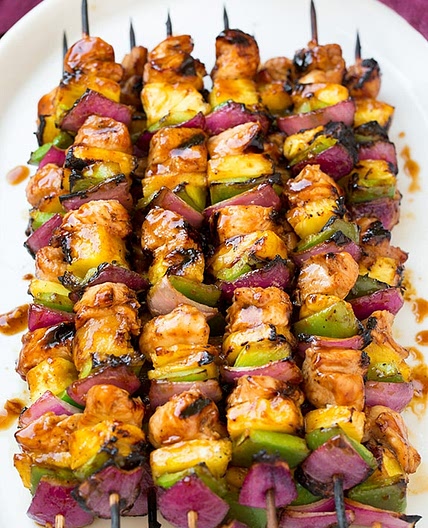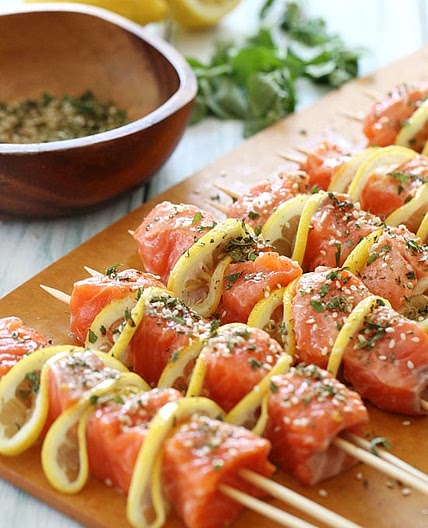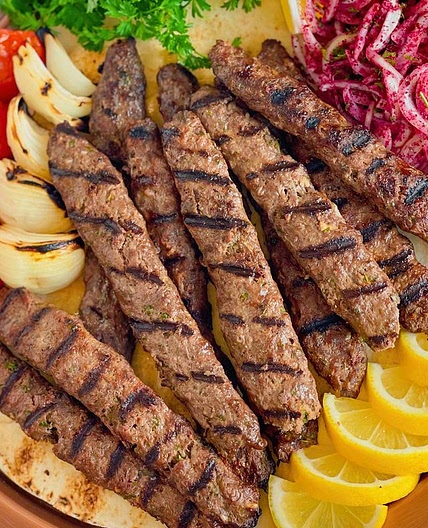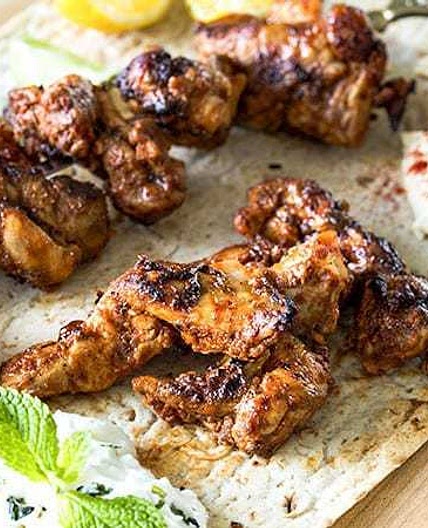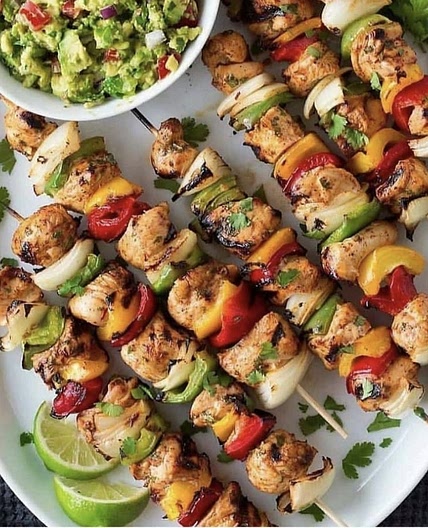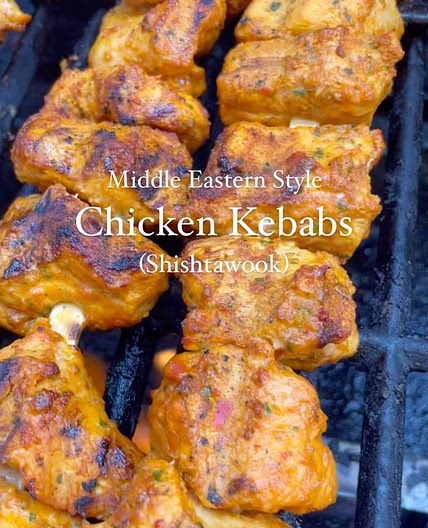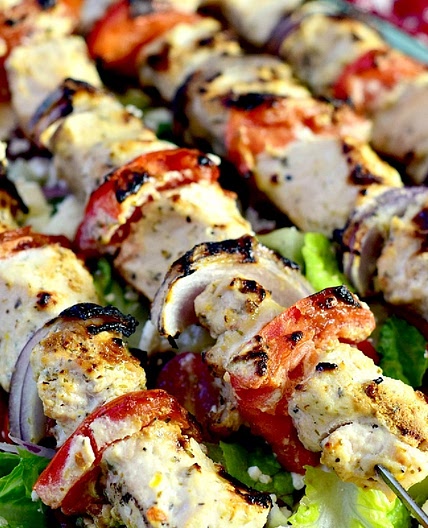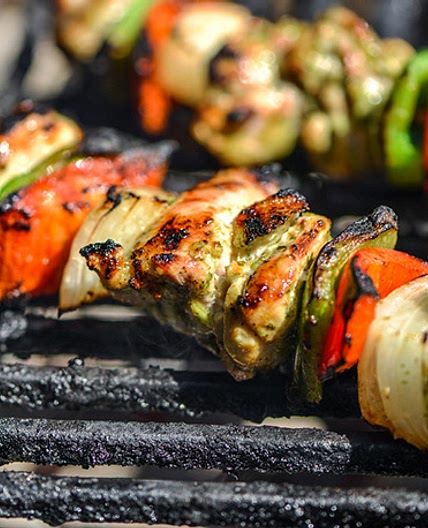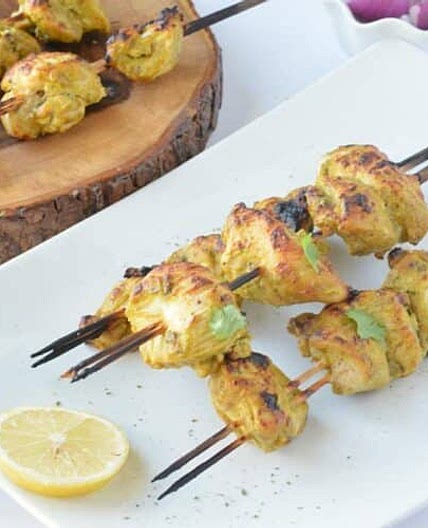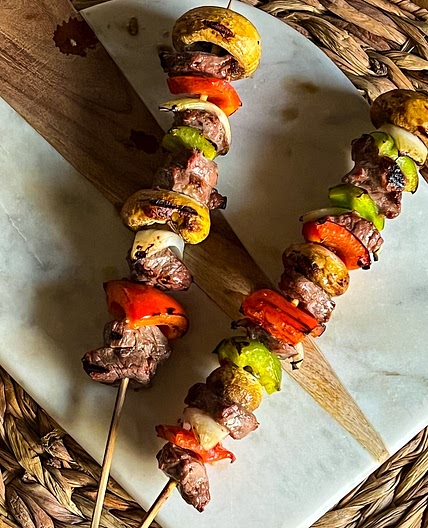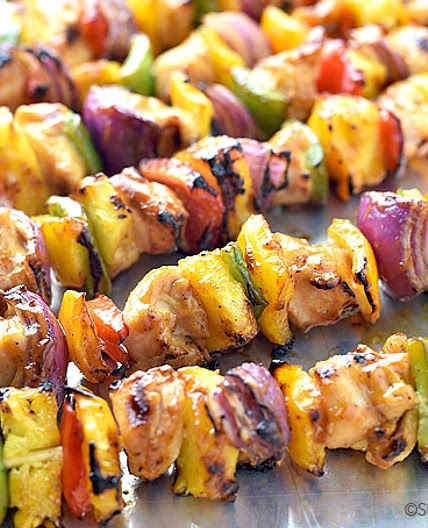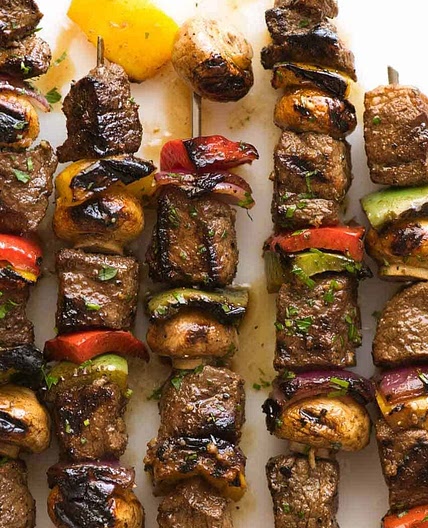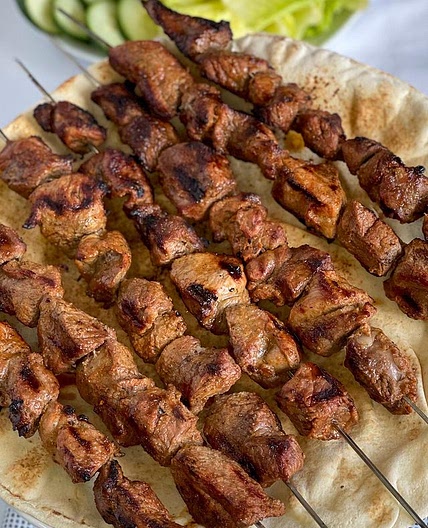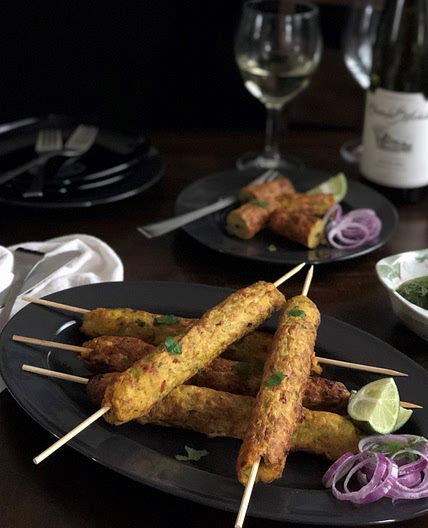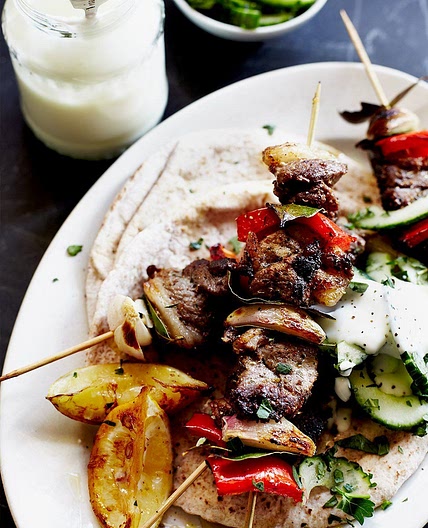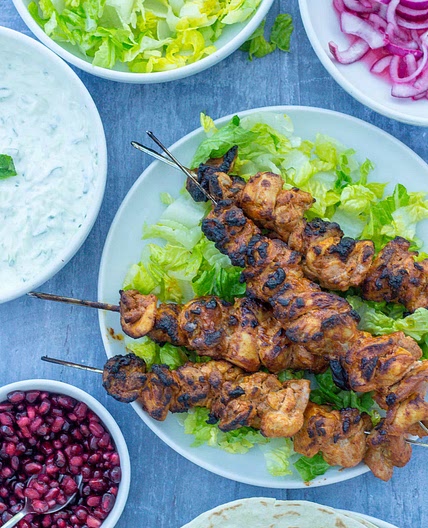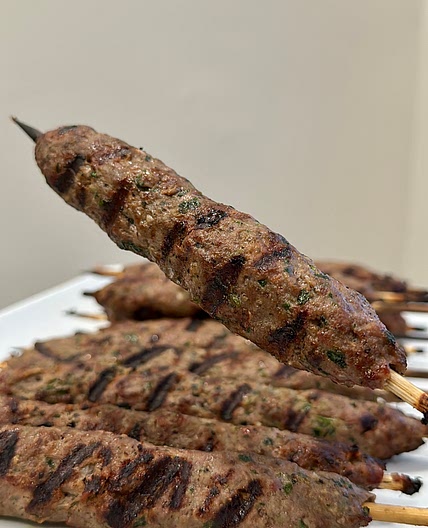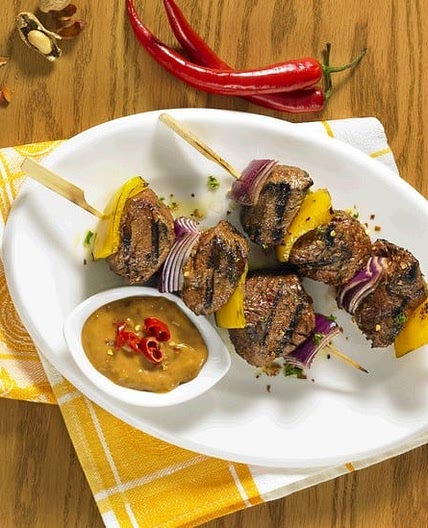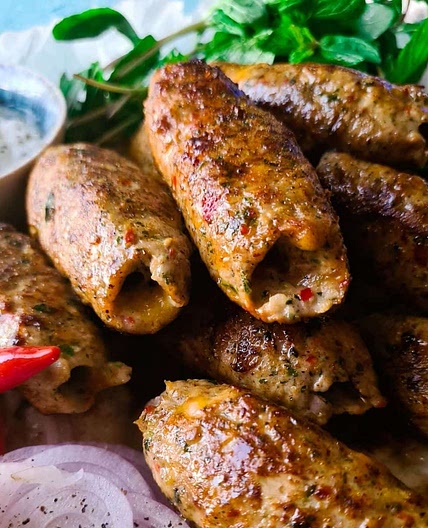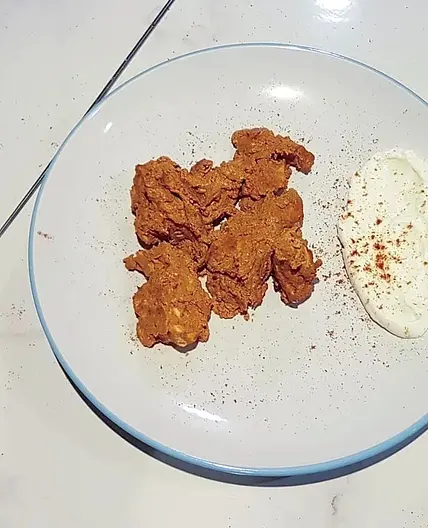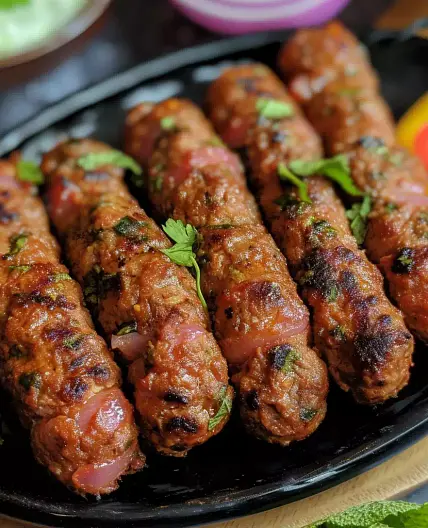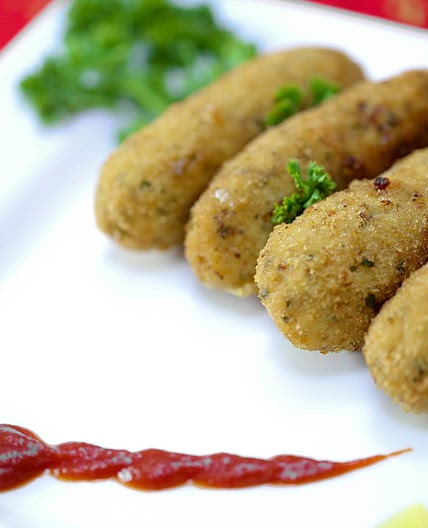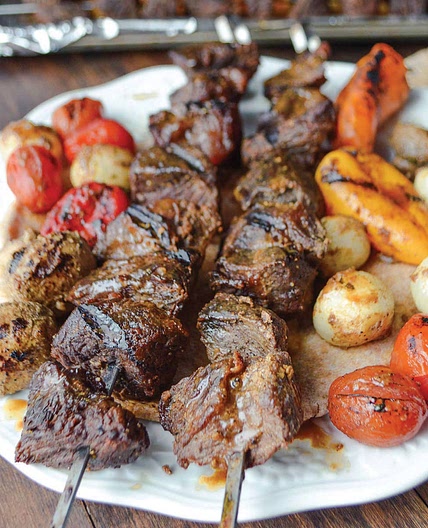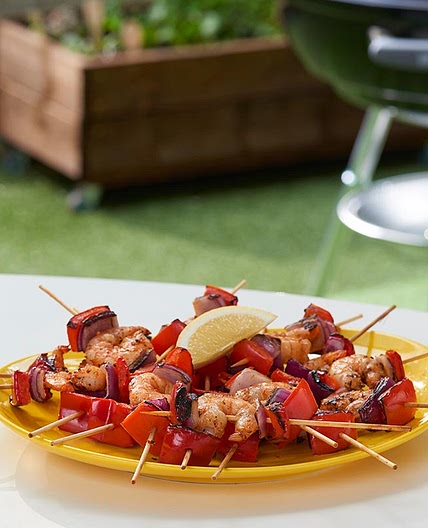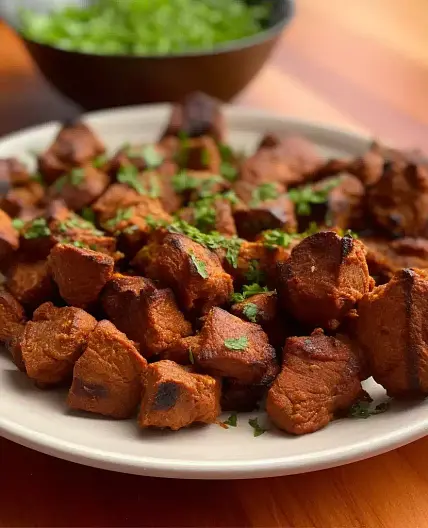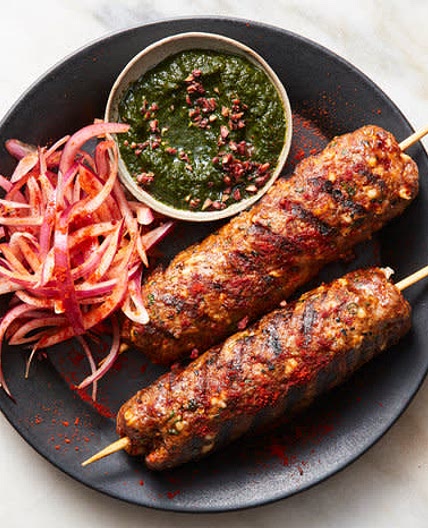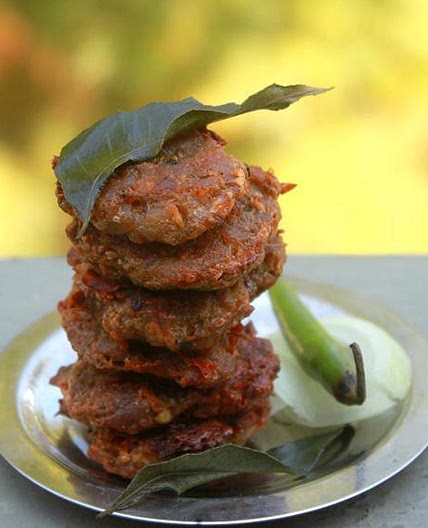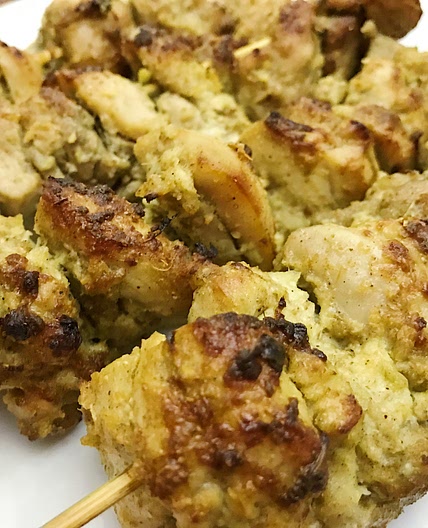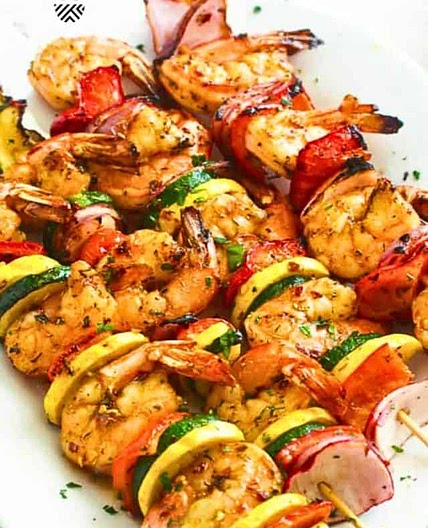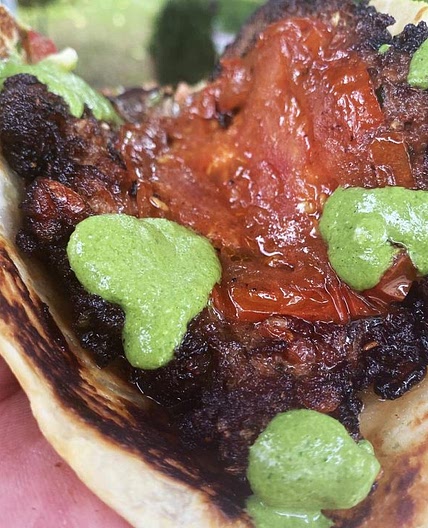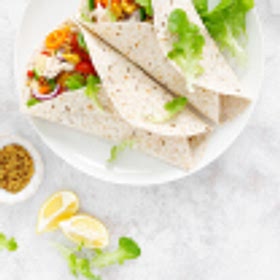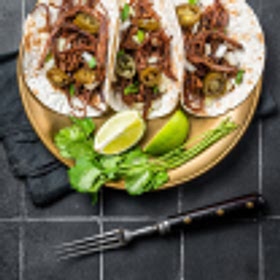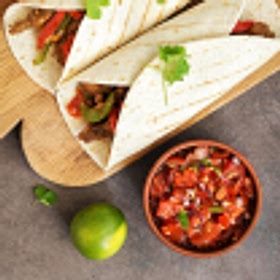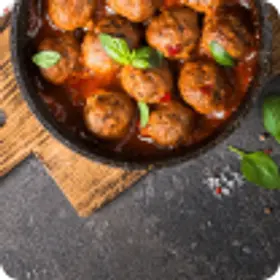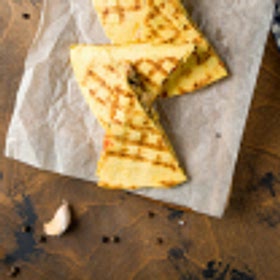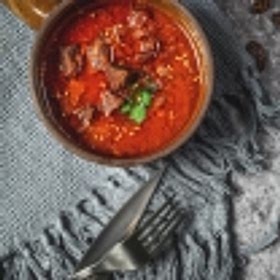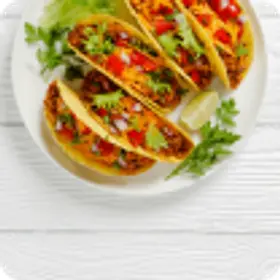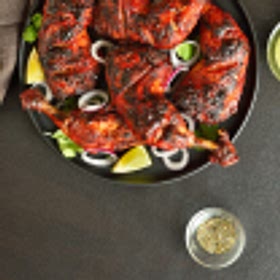Kebab: A Delicious and Nutritious Grilled Dish
Learn about the history, types, and nutritional benefits of kebab, a popular grilled dish enjoyed worldwide.
Nutrition per serving size(491g)
- Energy: 0
- Total Fat: 0
- Saturated Fat: 0
- Carbohydrate Total: 0
- Sugars: 0
- Protein: 0
- Sodium: 0
- Fiber: 0
- Trans Fat: 0
- Monounsaturated Fat: 0
- Polyunsaturated Fat: 0
- Cholesterol: 0
- Calcium: 0
- Magnesium: 0
- Potassium: 0
- Iron: 0
- Zinc: 0
- Phosphorus: 0
- Vitamin A: 0
- Vitamin C: 0
- Thiamin B1: 0
- Riboflavin B2: 0
- Niacin B3: 0
- Vitamin B6: 0
- Folic Acid B9: 0
- Vitamin B12: 0
- Vitamin D: 0
- Vitamin E: 0
- Vitamin K: 0
- Tryptophan: 0
- Alpha Carotene: 0
- Beta Carotene: 0
- Omega 3 DHA: 0
- Omega 3 EPA: 0
Kebab, also known as kabob, kebap, or shish kebab, is a delicious and nutritious grilled dish that originated in the Middle East and Central Asia. It consists of skewered meat, vegetables, and sometimes fruit, grilled over an open flame or on a barbecue. Sometimes they’re even on rotating ‘spits’ which turn so the meat is evenly cooked.
Where Does Kebab Come From?
The history of kebab can be traced back to ancient Persia, where it was originally made with lamb. Over time, different regions began using different meats, such as beef, chicken, and even fish.
In Turkey, for example, kebab is typically made with lamb or beef, while in India, it is made with chicken or fish. In the Middle East, kebab is often served with rice, hummus, or pita bread, while in Europe and North America, it is commonly served as a street food. And in London, it’s the quintessential ‘late night out’ meal.
These days, kebab is enjoyed worldwide, with different regions putting their own spin on this classic dish.
Types of Kebab
Kebab is a dish that has become popular across the world, though it’s usually associated with Middle Eastern cuisine. It consists of pieces of meat that are typically marinated and then grilled on skewers. The type of meat used can vary depending on the region and cultural influences.
In Middle Eastern and Mediterranean cuisines, lamb is often the traditional meat of choice for kebab. However, beef and chicken are also commonly used. In some regions, goat and even camel meat can also be found in kebab recipes. Vegetarian options also exist, which may include tofu or paneer.
There are many different types of kebab, each with its own unique flavor and preparation method. Some popular types of kebab include:
- Shish Kebab. This is the most common type of kebab, made with marinated meat (usually beef or lamb) and vegetables such as onions, peppers, and tomatoes.
- Doner Kebab. Also known as gyro or shawarma, this type of kebab is made with sliced meat (usually beef or lamb) that is cooked on a vertical rotisserie.The meat is shaved off as it cooks and is often served in a pita bread with vegetables and sauce.
- Kofta Kebab. Made with ground meat (usually lamb or beef) mixed with herbs and spices, shaped into balls or patties, and grilled on skewers. Sometimes this is also known as kofte.
- Tikka Kebab: A popular Indian dish made with marinated chicken or fish grilled on skewers.
Other Twists
Kebab meat can be seasoned with a variety of spices and herbs, depending on the recipe and personal taste preferences. Popular spices include cumin, coriander, paprika, turmeric, and chili powder. Garlic, onion, lemon juice, and yogurt are also commonly used in marinades to help soften the meat and add flavor.
Regardless of the recipe, the key to a delicious kebab is a flavorful marinade and proper grilling technique to ensure the meat is cooked to perfection.
Kebab meat can be served in a variety of ways, including as a main course, in sandwiches, or as a snack. Some popular kebab dishes include shish kebab, doner kebab, and kofta kebab.
In addition to these traditional kebab dishes, there are also many modern variations that incorporate different ingredients and cooking methods. For example, seafood kebabs, vegetable kebabs, and fruit kebabs are all popular reinventions of the traditional dish.
Kebab Nutrition
Kebab can be a healthy and nutritious dish, depending on the ingredients and preparation method. Grilling meat and vegetables instead of deep frying them helps retain their nutrients and reduces the amount of added fat.
Kebab can also be a good source of protein, vitamins, and minerals. However, some types of kebab may be high in sodium and saturated fat, so it is important to choose lean meats and limit the amount of added salt and oil. Chicken and fish are the healthiest options, whereas lamb can be high in fat and calories.
FAQs
Q: Is kebab a healthy dish?
A: Kebab can be a healthy dish if made with lean meats and grilled vegetables. It is a good source of protein, vitamins, and minerals, and can be a nutritious part of a balanced diet.
Q: Can I make kebab at home?
A: Yes, kebab can be easily made at home using a grill or barbecue. There are many recipes available online for different types of kebab, and you can experiment with different meats and vegetables to find your favorite combination.
Q: Is kebab a popular street food?
A: Yes, kebab is a popular street food in many countries, including Turkey, India, and the United States. It is often served in a pita bread with vegetables and sauce, making it a convenient and tasty snack on-the-go.
Kebab is a delicious and nutritious grilled dish with a rich history and many different variations. Whether you prefer shish kebab, doner kebab, kofta kebab, or tikka kebab, this classic dish is sure to satisfy your taste buds and provide essential nutrients. So next time you fire up the grill, give kebab a try!
